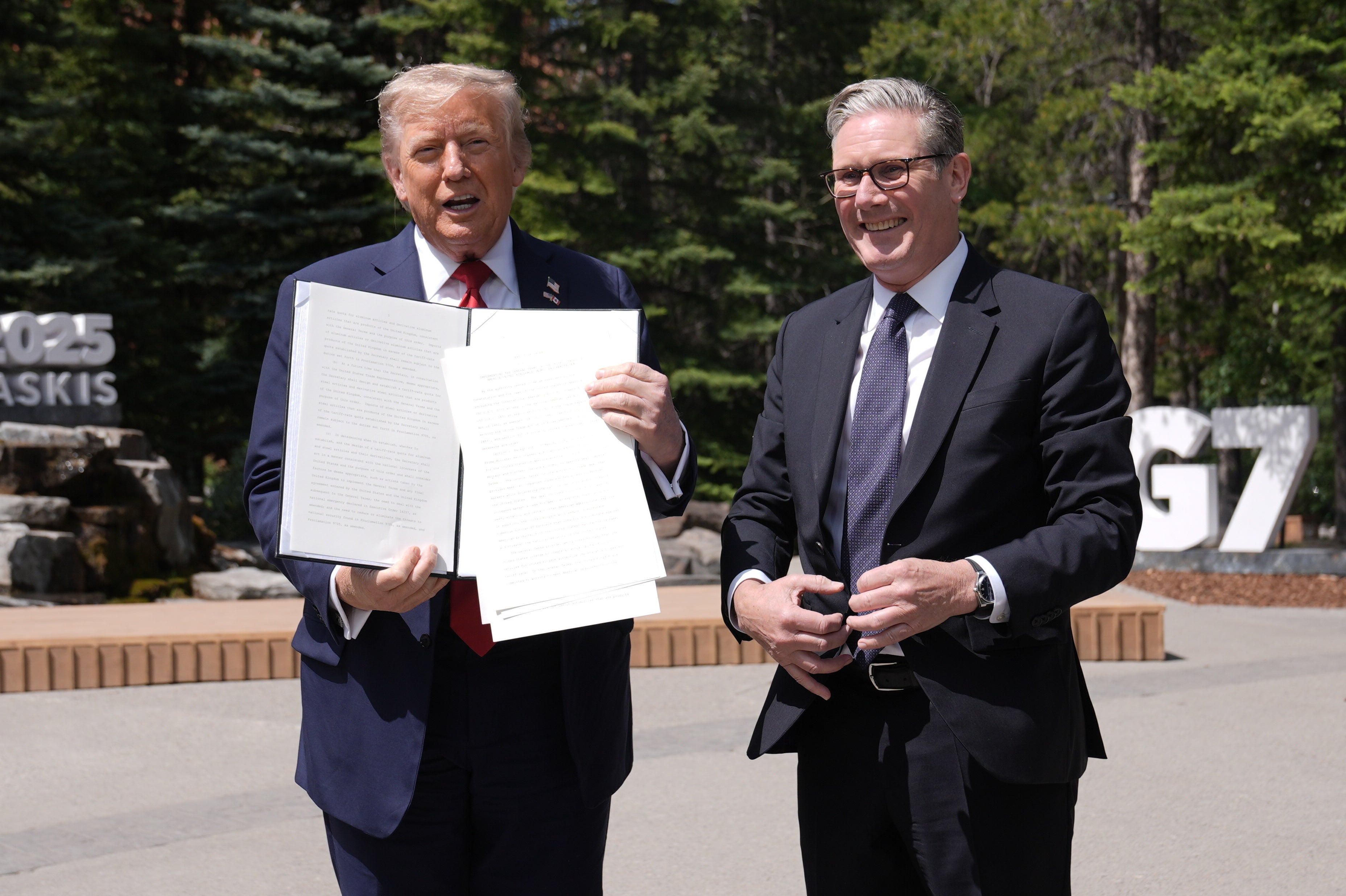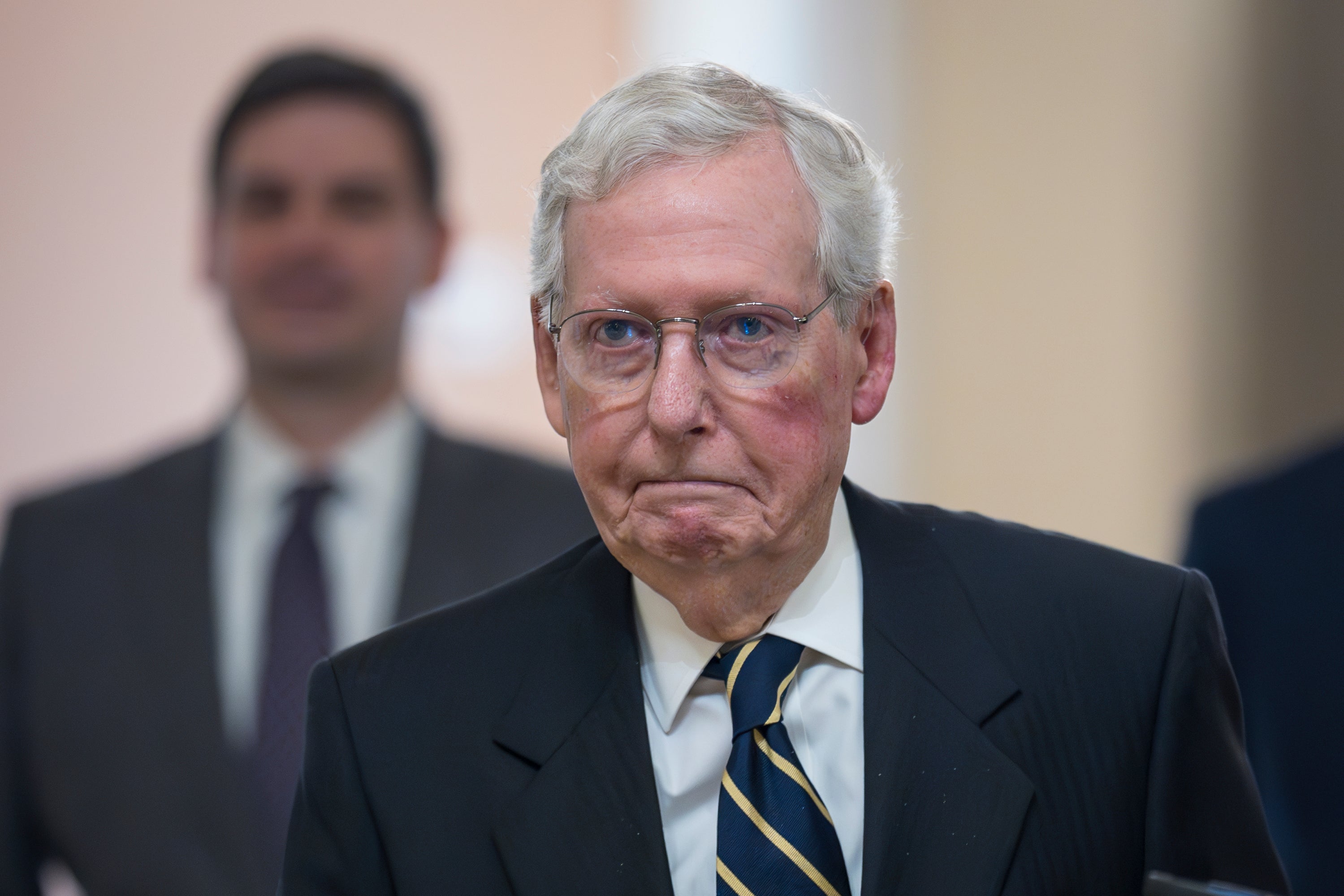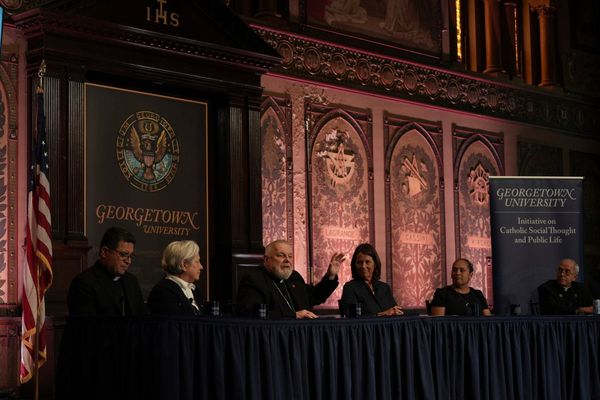Will the return of Donald Trump’s “reciprocal” tariffs mean the resumption of full-scale trade wars with U.S. economic partners? That remains to be seen, but some are already showing signs of flinching.
The president said on Tuesday that his administration would not implement any further “delays” in the resumption of his planned tariffs of as high as 50 percent on some countries. As the supposedly final deadline returns, several countries that have lingering unresolved disputes with the U.S. could return to a tested and familiar practice: putting the squeeze on red states and GOP-held districts.
With duties set to resume on Aug. 1, numerous foreign governments are now rushing to finalize deals with the White House. That includes the European Union (EU), of which Trump spoke favorably on Tuesday as he claimed that a framework agreement with the bloc was near.
Should foreign governments try and play hardball with the tariff rates, however, U.S. industries based in districts represented by Trump’s loyalists on Capitol Hill could be the hardest hit.
“You know when products like Kentucky bourbon are in the headlines, you know something's going on,” said Geralyn Ritter, president and CEO of the DC-based Crowell Global Advisors.
Crowell and other similar firms advise clients on trade issues including antidumping measures and countervailing duties — measures aimed at correcting practices deemed unfair that are carried out by foreign nations.
“It is far more common than not that countries will target politically sensitive sectors,” Ritter continued. “It is really a long standing practice that governments choose … their products for retaliation very specifically and in a very focused way.”
That was the case earlier this year, when Trump’s first rollout of tariffs was met with attempts at retaliatory measures by Canada, China and some other countries.
Originally announced in April on what the White House dubbed “Liberation Day,” the tariffs were set at individual rates for various countries and trading blocs, including one group of uninhabited islands near Australia. (The Sydney Morning Herald reported this week that the penguins roosting on the Heard and McDonald Islands were “on standby” as the tariffs snapped back into place.)
Agricultural imports were a top target: America’s northern neighbor took aim at dairy products, poultry, and a wide range of foodstuffs. China did the same with a particular focus on U.S. soybean exports.

The selection of U.S. goods targeted by tariffs is never random. The political implications of some import and export duties are obvious on the face: China’s restrictions on semiconductors and various countries’ tariffs aimed at hurting U.S. automakers being prime examples.
Some are less obvious, but similarly impactful.
China’s soybean duties will have the greatest impact in Illinois, a blue state — and the only solidly-Democratic state in the top 10 soybean producers in the country. The remaining nine lean Republican with the exception of Minnesota, a battleground state that typically votes Democratic in presidential elections.
But here’s the thing: if the White House and U.S. trading partners return to the bluff and bluster dynamic that defined the first round of tariff announcements, these retaliatory measures can (and likely will) become a lot more grassroots. Especially as the congressional midterm elections near, and Republicans shift their attention to defending thin majorities in each chamber.
During Trump’s first term in Washington he attempted a similar reorientation of the global trade order, though on a much smaller scale. Yet his efforts were met with outright threats of tariffs microtargeted to states from which GOP congressional leaders hailed as well as the reddening swing state of Florida.
“We will put tariffs on Harley-Davidson, on bourbon and on blue jeans — Levis,” then-European Commission President Jean-Claude Juncker declared in March of 2018.
But the U.S. has one key advantage: the sheer size of its economy. Even impactful measures against sectors of the U.S. economy are not as effective as U.S. retaliatory tariffs often can be.

That was a lesson Canada learned earlier this year. While Liberal Party candidate Mark Carney ran for prime minister and won on a platform of standing up to U.S. trade bullying, the actual effectiveness of Canadian import duties was negligible.
As Canadian economist Trevor Tombe wrote in April: “These early signs suggest the impact on the U.S. economy is minimal.”
Ritter also questioned the potential effectiveness of such blatantly politicized measures at a time when Trump’s team was engaging in reasoned dialogues with trading partners but the risk of angering or provoking the president personally remained a risk.
“I am very skeptical that this administration, especially right now, at this point in time, given recent developments, is going to be bullied, if you will, into making a concession because of a targeted threat against the particular industry,” said Ritter.
“I think especially if those kind of threats are made, and they're made very publicly, it's not going to be constructive right now.”
While the administration seems to be making progress behind the scenes in coaxing trading partners towards framework agreements aimed at averting tariff hikes, outliers exist such as Brazil, which was slapped with a 50 percent “reciprocal” tariff on Wednesday.
Brazil’s government was already in talks about retaliatory measures before the announcement. So is the government of India, which is proposing retaliatory duties against the U.S. over steel and auto tariffs.
Ritter and other experts said they expected to see more tariff hikes in the short term as the president continues his unique form of “dealmaking”. Over the weekend, Treasury Secretary Scott Bessent suggested that some of the tariff rates imposed on U.S. trading partners were in fact all that would constitute the “deals” Trump’s top trade adviser said the president would be striking left and right.
And there’s still no signs yet of the kind of major onshoring of manufacturing or supply chains which top administration officials have presented as the end goal of the new U.S. tariff regime.
Hesitance about the overall stability of the economy and the volatility caused by tariffs is scaring some off from making greater investments in the U.S., while others are unable to center production entirely in domestic facilities, making import charges unavoidable.
Experts fear that some industries, like pharmaceuticals, may experience players leaving the market entirely rather than attempt to reorient production — leading to possible product shortages.
The White House claims it is pushing forward, given that Trump backtracking now would only introduce more of that volatility and lead to more insistences of him “chickening out”, a refrain that was picked up by some Wall Street traders after the delay of his reciprocal tariffs.
Those same financial analysts aren’t necessarily buying the bluster any more, though.
“The pattern is familiar: dramatic declarations, walk-backs, and renewed threats. It's eroded his credibility and resembles the boy who cried wolf,” Carolyn Kissane, a professor at NYU's School of Professional Studies Center for Global Affairs, told The Independent.
“He believes this tactic gives him a unique leverage to negotiate, but it also weakens the threats.”







